
In the words of Dr. Kelly Starrett, physical therapist and author of Supple Leopard and Ready to Run: “In yoga, it’s called tadasana. In life, it’s called standing.” At the base of your whole glorious self, your tadasana self, your standing self, are your FEET, unless you are standing on your head. And please stop doing that. It’s so 1972. I would like to introduce you to your feet.
Stand up on your feet right now. Do it. No, seriously, do it. Please stand up. Stand vertical. Stand tall. Okay. Sit back down. What I’m about to tell you might be shocking. The foot is a very intricate structure containing 26 bones, 33 joints, 100 ligaments, muscles and tendons, and 250,000 sweat glands! (kind of explains the smelly part…) The average person takes 8,000-10,000 steps a day, but no matter how many steps you are taking a day, if your feet are not healthy, your steps are not healthy. Poor alignment, poor movement, poor achy, hurt and mangled feet. But you know who’s not poor? The podiatrist. Don’t be a part of these depressing, downright scary statistics: The number of people with foot care problems is growing with industry revenue expecting to reach $3.2 billion in global sales by 2015. The demographic of 76 million Americans born between 1946 and 1964 – baby boomers – is a golden market for this businesses. The number of diabetics, a major target for this business, is over 25.8 million and growing in the U.S. alone. Take care of your feet, please.
The feet are your bony-structure foundation and have an effect on the entire body from the ground up. They are also your fascial foundation, meaning the muscles, bones, and tissues are surrounded by and interwoven with fascia that is continuous with the fascias of the body. That’s right. Fascia is all over, ubiquitous, continuous, gelatinous, webby, gooey, and it’s the scaffolding of your whole body. If fascia in one area is stuck and hardened, your tissues and muscles are not sliding and gliding the way they should. If you have bunions, overlapping toes, arthritis, diabetes, heel spurs, or any other of the host of possible issues with your feet, start massaging them daily! In Chinese medicine, reflexology is used on the feet to affect the internal organs and glands throughout the body. Circulation, blood and nerve supply and energy levels are affected by the feet. It feels good to massage your feet and it’s so good for you too. In Yoga Tune Up®, we roll out our feet because we know that what’s happening in the feet affects the calves, the hamstrings, and sometimes even farther up the chain.
One of the reasons I became a yogi was because I didn’t have to wear shoes. I have a super duper uber narrow foot that makes it hard to find shoes that fit. I wore shoes that were too short most of my life so they would stay on. When I found yoga, an activity with no shoes required I was beyond thrilled. When I found Yoga Tune Up®, I began to learn the anatomy of my feet and what I could do to make them stronger and more effective as my foundation, both on and off the yoga mat.
Here are a few things you can do to put your feet first:
1. Spend more time barefoot. Remember being young and running around outside over grass and rocks and being barefoot? Now we need pillows under our feet to stand and wash dishes. And sneakers with two inches of cushion. This is not normal. We need to take control of healing our foundation. Spend more time barefoot. Work on balancing on one foot and strengthen your foundation.
2. Get your feet up above your heart once a day for 5-10 minutes. Lie down and put your legs up on a couch or bed or chair and breathe. The is wonderful for circulation and tired achy feet.
3. The alignment or position of your feet will, indeed, have an effect on your knees, hips, low back and overall health. Which effect are you going to choose? Positive or negative? (Hint: Go with the positive.) How should you align your feet?
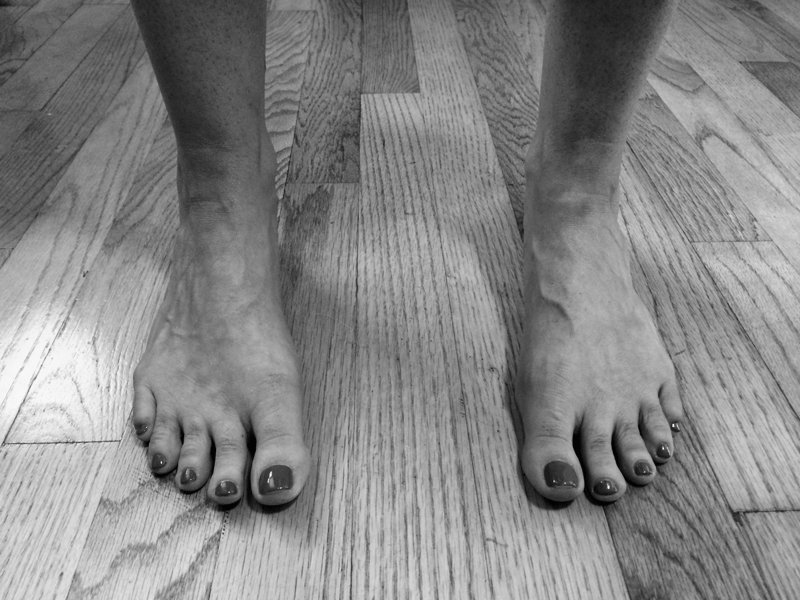
Stand up. No, seriously. Make your feet look like downhill skis, with the outer edges parallel. (See picture below. I used the wood floor as a guide.) Make these parallel feet your new everyday standing position, walking position, running position, spinning position, etc. When standing, have your feet directly under your lungs and work at stacking your hips over your knees and your knees over your heels. If you are walking like a duck in external rotation, just return to parallel feet every time you notice. Constantly check and return to your new positive choice!
Tune in Friday for Yoga Tune Up® Therapy Ball Tricks AND Treats for healthy “feets!” And read my teacher’s book The Roll Model, for life-changing info about taking care of our own tissues.



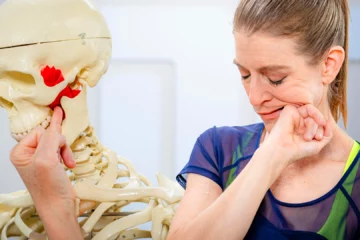
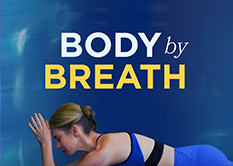



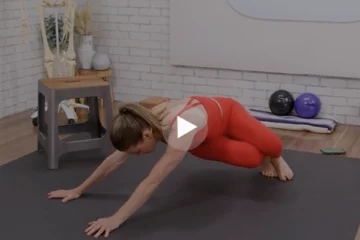
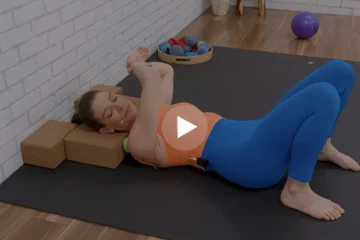


Thank you! I’m obsessed with feet – I’m nuts about foot position in my classes and I feel like a broken record. But it makes 100% sense that the quality of the foundation impacts the quality of the building you put on top of it! The reality is – we’re broken records because people’s feet get so jacked up in the conditions of modern life. Spend more time barefoot was also a great recco – I often think of flip flops as “barefoot” but was reminded recently that the flexor digitorum muscles are actually working their little selfs to death just trying to keep those bad boys on our feet.
Thanks for the interesting article. My daughter has various “feet issues”- hopefully, she will give it a try 😉
Great tips and reminders. In my YTU training this week I found some serious pitfalls in how I was standing and walking. Interestingly enough I didn’t find them until I was laying on my back with my feet on the wall – but nonetheless I found them. The awareness has already allowed me to pay more attention to the steps I’m taking and the way I work out and get into certain yoga poses! I’ve started to make it a part of my daily routine to roll out my hands and feet.
“The alignment or position of your feet will, indeed, have an effect on your knees, hips, low back and overall health” and I like the feet alignment photo; not hard to remember as I like to downhill ski and you can’t have your feet placed any old way – they have to be straight on.
I walk a lot and am in my car just as much – my lower back to sacrum are tender when I have finished my day. I will now add this small change to my daily routine (hopefully less getting up or out of my car like an old lady!)
Thank you so much for your foot health tips! I’m on my feet all day when I work as a cashier/ bagger at a grocery store and when I play as an intermediate flamenco dancer. I use the yoga tune up balls almost daily and have noticed a huge decrease in knee and back pain. I have not tried stacking my feet over my heart to rest my feet and increase there circulation. I can’t wait to try that on the couch after a hard long day! I am also becoming more aware of my feet positioning while Im standing. Ive noticed that I externally rotate my feet a lot. I keep bringing them back to parallel when I notice, but its a constant battle with this habit. My ankles have been becoming more sore and the externally rotated standing posture may be the culprit.
“1. Spend more time barefoot.” For whatever reason as a kid I was never really barefoot at all. It has been a psychologically uneasy, but physically amazing change in my adult life to be barefoot more often. Still doesn’t always come first as a habit for me, but this is a great reminder to “get back to natural”.
“2. Get your feet up above your heart once a day for 5-10 minutes.” Not only great for me as a down regulator at the end of a long day, but I just realized a co-worker of my has been complaining of circulation issues lately (recently diagnosed as diabetic) and this is a super simple but effective exercise I think I can convince him to try.
“3. The alignment or position of your feet will, indeed, have an effect on your knees, hips, low back and overall health.” Working on my posture or poise has be instrumental in helping with my back pain. Without out a solid foundation you will surely fall. Amazing how such small changes can have meteoric effects in the rest of the body.
Well said!
I have been neglecting to keep my feet parallel and your photo is now implanted in my brain on focusing on doing this daily to try to improve my bunions. The mechanics of the feet are truly amazing. Also, your alignment instructions are clear and consise. I’m just learning more regarding my “bunion issue” muscles – flexor & extensor digitorum brevis, abductor hallucis, extensor hallucis brevis, abductor digiti minimi- and rolling on those areas for release.
I have become very aware of my feet this past year, transitioning to barefoot or minimalist style shoes and improving alignment when standing and walking. My right foot has a bunion which is starting to form, and the more I walk with proper alignment (outer feet straight, extending hip, using toe off) in proper footwear, the better my bunion appears (decreasing the angle!).
My feet have certainly taken a beating after 16 years of running. Add in bunions, and I now understand why it is so important to roll out my feet every day. Foot pain every day is not necessary!! This article has inspired me!
This blog post is too good not to share. I’m obsessed with the feet at the moment (well pretty much always) – i’m about to run a 1/2 marathon and my feet have taken a beating prepping for this event, especially my medial arch (and it doesn’t help that i have knocked knees). Thanks for sharing!
Thanks Terry, I agree so much with you “The alignment or position of your feet will, indeed, have an effect on your knees, hips, low back and overall health.” When I realized that I always had my feet externally rotated was at the YTU training and I was so shocked to realized how many times Jill or the other teachers would correct me. I decided to align my feet and to correct every single time I realize it’s offset.. this is not easy and I haven’t succeeded 100% but I’m getting there. Thanks for your post really help me.
“You know who’s not poor? Your podiatrist”! I might have to steal that. I love your simple three point plan. It’s not overwhelming yet asks the reader to start paying attention.
Spending most of my day on my feet, I know even just 2 minutes here and there of rolling my soles is vital to getting through the week. Little and often!!
I really liked this article and I totally agree that people need to take care of their feet! However, a kinesiology professor once explained the dangers of being barefoot and how shoes really help. First of all, surfaces such as pavement are new and our bodies have not evolved to handle them – hence why there are so many “impact” issues. Additionally, when you are barefoot, you are much more likely not to engage the appropriate muscles in the food and then your arch can collapse… very bad for the whole body! I think it’s really important to strengthen those muscles, but only if you know how to properly engage them.
I agree… Foot health is a reflection of your overall health… I did some additional research to find that each foot is the home of thousands of nerve endings and the information they receive and pass on to the rest of the body is incredible. When your foot feels the ground, (or whatever is below it, including any footwear), the thousands of touch receptors in the nerve endings feed back to the rest of the entire nervous system. Since your nervous system runs your entire body, any foot impairment, dysfunction, injury, pain, or improper footwear can not only hinder you directly, (such as lower leg function and balance), but your entire health.
Walking or running barefoot are an ideal way to improve your proprioception (sense of position) and kinesthetic. Natural motions of the human body provide optimal neurological input and increase blood flow to the brain improving the health of the nervous system. This increased blood flow provides more nutrients and oxygen to the brain and to the entire body thereby improving the health of a barefoot person.
@Mary. Thanks for reading! For sure, I would never want to force any specific movement or alignmentt if it isn’t right for someone. If constant external rotation has been an issue, it’s sometimes good to start with parallel feet while seated or while lying down or standing in line at the store, to begin to introduce parallel feet. Also great to consider a gate analysis with a gate analysis expert. It all depends on the person for sure.
Indeed, foot health is vital to the health of our physical body. As the foundation of our body, if they are out of whack, everything else above the feet will follow their lead. YTU offers great tools to begin healing the feet. I do question however, the safety of forcing the feet into parallel when walking, running, etc. If the rest of the body isn’t prepared for parallel feet, this seems like it could result in stress on the joints above. Some would argue that parallel feet is not “neutral alignment” for all bodies. Thoughts?
Hi Terry,
I loved your article and the fact that you are bringing so much attention to the much deserved feet. I love foot massage and I agree that it has a huge influence on your general health. Sometimes I massage my own feet and take time to actually thank them for all the places that they have brought me and will continue to bring me. Check what your feet does the next time you are waiting in line at the grocery store to pay. As for shoes, one really has to take the time to find comfortable shoes to make it fit their lifestyle. A lot of comfortable shoes are not very attractive, but taking the time to find a pair of fitted and comfortable shoes is a life /body saver.
Great blog Terry! I had no idea that the number of people with foot care problems was so high. In our Yoga Tune Up weekend for my teacher training program, we began looking at the bodies of our peers. It was amazing to hear how some people had foot problems that in turn created problems in places like their shoulders. I began thinking about my own body in a different way after this. I used the yoga tun up balls on my feet a few times and noticed some extreme pain in certain areas. Through using the balls, I feel as if I stand differently now. I like the tips at the end of the blog because they are simple and easily accessible for everyone. I will share this knowledge with others. Thank you again!
@Doug. Thanks for reading.
In a perfect world, we should be able to squat both ways. slight turnout okay in a weighted squat, and most will find that more comfortable. But we can squat with the feet in parallel, butt back, butt ON and knees out.
This is such a great article! No, I did not know that there were 26 bones, 33 joints, and 100 ligaments, muscles and tendons in the foot! Such an intricate part of the body that carries me around! =) I am beginning to have more appreciation for my little feet, and what’s funny is that I do lay that way on the couch – with my feet up as I lay down and watch TV. And since I’ve taken the YTU L1 training, I noticed how Jill Miller stands regularly, and it’s in tadasana with her feet parallel. It just looks unnatural, but I’m discovering since I re-injured the left side of my lower back last Wednesday, I have more of an external rotation of my right hip when I walk! Agggh! It’s been such a journey, my yoga practice is spilling into my daily practice, and that’s just what it simply is – a daily practice of living better in my body! Thanks for the tips! The barefoot thing isn’t something I practice, but I can incorporate that more. I’m usually in flip-flops 90% of the year living in America’s Finest!
why can’t I find yoga instructors like you in my area?! Oh well, maybe in time!
good blog!
Should you have your feet parallel when squatting? I believe your feet should be angled out so that your knees track over your feet during the squat.